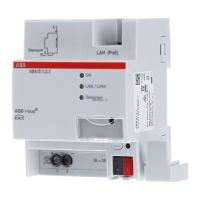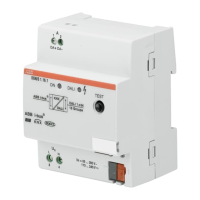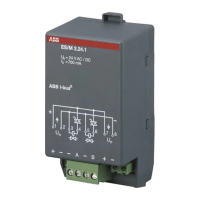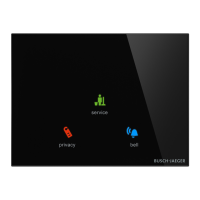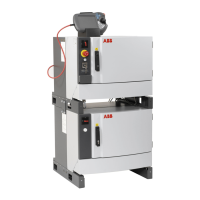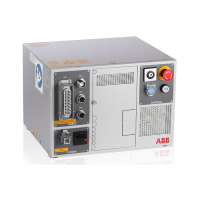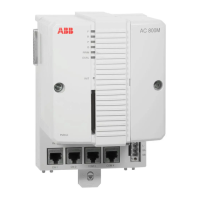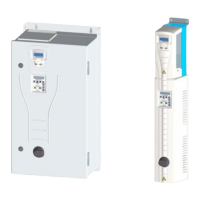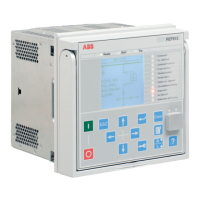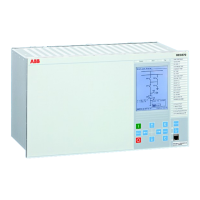ABB i-bus
®
KNX
Commissioning
40 2CDC508198D0211 Rev. A | AC/S 1.x.1
6.2 Commissioning overview
The individual commissioning steps should be undertaken in the following recommended sequence:
Commissioning steps Remark
1. Installation of the ETS application See chapter 6.4, Software / application
2. Installation of DCA See chapter 6.4, Software / application
3. Configuration of the device addresses The configuration of the physical KNX address and
the IP configuration can also be undertaken without
DCA installed.
• Physical KNX address See chapter 6.3, Assignment of the physical
address
• IP configuration See chapter 6.3.1, Network settings
• BACnet device address See chapter 7.2.2.3, BACnet parameter page
4. Device firmware update check Check whether an update is available for the device
software. In general an update will provide new
functions and rectify any bugs.
See chapter 10.3, Software update
5. Minimum parameterization of the device
• Set device clock See chapter 7.2.2.5, Clock parameter page
• Set users and passwords See chapter 7.2.2.4, WebUI - Users parameter page
• Set encrypted access to the web user
interface
See chapter 7.2.3.7, SSL certificate parameter page
6. Parameterization of the device For a description of the commissioning interface in
DCA, see
chapter 6.5, Device Configuration App
(DCA)
For a description of the application-specific
automation modules (ASM) as well as the general
device settings, see chapter 7
For general notes and remarks, see chapter 12,
Planning and application
Table 11: Commissioning overview
The parameters are downloaded to the device using the ETS function Download. See chapter 6.5.11,
Download reaction.
The device is then in operation and undertakes the functions parameterized. For information on the
operation of the web user interface, see chapter 9.2, Web user interface
.
If you have any problems, see chapter 10.4, Support.
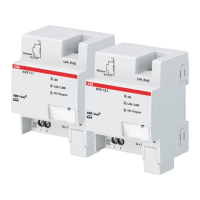
